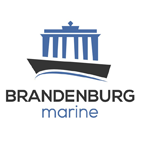Loss Prevention Advice
- Details
- News /
Pilot Ladder Safety – Do It Right the First Time. Every day around the world, maritime pilots board and disembark ships using pilot ladder arrangements. When the pilot ladder is not used properly, a routine procedure can turn into a critical hazard.
There are some very good reasons for using the pilot ladder in the correct way: The safety of the pilot and the structural integrity of the pilot ladder. The aim of this website is to increase Pilot Ladder Safety awareness by showing good practice on the rigging and safe use of the pilot ladder.
Full advisories at the following link.
https://maritimecyprus.com/wp-content/uploads/2021/07/pilot-ladder-safety.pdf
and
https://maritimecyprus.com/wp-content/uploads/2021/07/00-Pilot-Ladder-Safety-Poster.pdf
and
https://maritimecyprus.com/wp-content/uploads/2025/05/Pilot-Ladder-Safety-guide_c.pdf
- Details
- News /
Below you will find a weekly report dated 4 June 2025, covering the period of 29 May to 4 June 2025, where the following incidents were reported:
- 1 maritime security incident in West Africa in the last 7 days
- 0 maritime security incidents in the Indian Ocean/Middle East in the last 7 days.
Full advisory at the following link.
https://britanniapandi.com/wp-content/uploads/2025/06/ARC-Weekly-Report-04.06.25.pdf
- Details
- News /
Exhaust gas cleaning systems (EGCS) – more commonly referred to as scrubbers – are an accepted equivalent measure in complying with the IMO 2020 global sulphur cap. The use of scrubbers has split the shipping industry. Ports around the world continue to look at the impact of scrubber use in their waters.
Many ports and regions have already stated that they will not allow the discharge of wash water from open-loop scrubbers.
The table below summarises our understanding of the positions taken by ports that have or will prohibit the use of scrubbers or have placed conditions on their use. This information is to the best of our knowledge and is for guidance only. For up to date and definitive information, you should contact the local authorities or your agents.
This information has been researched and gathered in collaboration with the Clean Shipping Alliance, and we are grateful to our network of correspondents and local sources for their valuable contributions.
Full advisory at the following link.
- Details
- News /
Maritime Security Threat Advisory highlights critical developments, from piracy activity in the Gulf of Guinea to innovative drone-based security threats.
Gulf of Guinea: Piracy on the rise
According to Dryad Global, piracy incidents in the Gulf of Guinea have surged by 30% in 2025, underlining the region’s persistent security challenges. On May 30th, the cargo vessel ORANGE FROST was boarded by armed attackers near São Tomé and Príncipe. The crew’s citadel response mitigated casualties, but one engineer is missing and presumed kidnapped. This incident follows a similar April boarding of the SEA PANTHER off Nigeria, suggesting a troubling trend of pirate activity and targeted equipment theft in the region.



